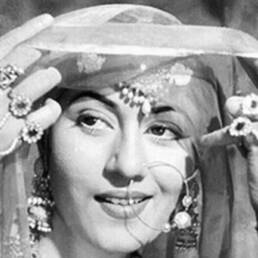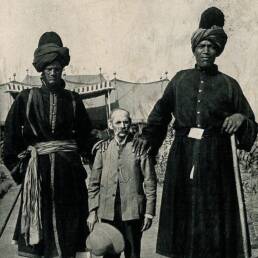More than 3/4th of a century has passed, yet there’s no love lost between India & Pakistan. While a lot has been tried in the past to repair the damage, at least for once, India had capitalised on the ill reputation between the old foes to help liberate another country.
During the last decade of Ayub Khan’s presidency, Pakistan had fallen into a state of disarray. The long civil unrest in East Pakistan had evolved into a mass uprising under their charismatic leader Sheikh Mujibur Rahman.
As the power shifted hands in March 1969, the new president Yahya Khan imposed martial law to seize the revolt.
He used Pakistan International Airlines (PIA) flights to send Pakistani Armies, disguised as civilians, into the eastern part of the country which triggered the chaos further. East Pakistan was in desperate need of a saviour.
Amid this mayhem, Pakistani Intelligence went a step further and formulated a plan to hijack an Indian Airlines (IA) plane which was due to fly from Srinagar airport, co-piloted by Rajiv Gandhi, the son of the then Prime Minister of India, Mrs. Indira Gandhi.
The startling facts came to the light when the mainstay of the plan Hashim Qureshi was arrested by the BSF while attempting to cross the border in January of 1971. Surprisingly enough, Qureshi was a former Research and Analysis Wing (R&AW) recruit.
His initial job was to work as a double agent for India being part of a militant group in Pakistan occupied Kashmir (POK). However, he changed his integrity during his mission and was subsequently trained by ISI.
Qureshi’s interrogation made the scene clear that the knights, bishops and pawns of the bitter neighbour had spanned all across. It was now time for India to make their move on the chessboard.
Rameshwar Nath Kao, the then chief of R&AW, deduced a master plan for checkmate. Qureshi would be allowed to continue his plan of hijacking the plane and demand the release of 36 members of Al-Fatah from Indian custody in lieu of the abducted passengers.
However, he would not hand over the control of the aircraft to the Pakistan authorities until he was allowed to talk to Zulfikar Ali Bhutto, Chairman of the Pakistan Peoples Party (PPP). He had planned to then blow up the plane to prove the validity of his credentials.
Kao persuaded him to follow his direction and in return he was assured that he wouldn’t be prosecuted by Indian authorities. The plan was formally approved by Indira Gandhi and Qureshi was sent to a safe house in Bangalore to keep it a top secret plan.
On January 30, 1971, Hashim and Ashraf Qureshi, 2 operatives from R&AW were allowed to hijack ‘Ganga’ – a Fokker Friendship plane of IA with 26 passengers on-board from Srinagar airport.
As soon as they took off, they threatened the pilot with a toy gun and forced him to divert its route and take it to Lahore airport. The Pakistani authorities allowed the landing as they got the information that it had been hijacked by the National Liberation Front militants of POK.
As the plane landed in Lahore, All India Radio (AIR) made an international broadcast that the Pakistani Government was behind the hijacking. As per the plan, Qureshi made the demand of releasing 36 prisoners from Indian custody and asked for a meeting with Bhutto.
Though the Indian government had refused the demand of releasing the detainees, Bhutto did come in-person to meet with Qureshi at the airport. And, after a brief discussion, all passengers and crew members were sent back to India and the plane was put on fire by the ISI operatives.
The fact that the Pakistan government offered political asylum to Qureshi despite the full knowledge of Bhutto, strengthened India’s claim of Pakistan’s ill intentions. Kao’s master plan worked like magic.
As Pakistan started to face widespread international criticism, India immediately banned all PIA flights from its territory that subsequently brought a major blow to Yahya Khan’s plan to curb the political movement in East Pakistan.
It wasn’t until Richard Nixon, the then United States President, clandestinely allowed the Pakistan Government to transport their soldiers in PIA aircraft rerouting via Sri Lanka and the Himalayan range.
If it wasn’t for Kao, the staggering number of lives lost and injured during the Liberation War of 1971 could have been doubled.
Though the damage between the neighbouring countries had been made further irreparable with Kao’s lie, in hindsight countless people lived to breathe the air of a free nation.
Source:
Yadav, R. K (Former R&AW Officer). Mission R&AW. (Manas Publications)
Image attributes:
Mujib campaigning before the 1970 election by AP Photo/Dennis Lee Royle. From Wikimedia Commons Public Domain.
Go Softly In A House Of Spies. https://www.outlookindia.com/magazine/story/books-go-softly-in-a-house-of-spies/302663
Hashim Qureshi, convicted of the hijacking in Pakistan by Umeraslam. From Wikimedia Commons.
Rameshwar Nath Kao in his early years of life by Asian Voice. From Wikimedia Commons.
Photo of the Indian Airlines Fokker F27 Friendship (VT-DMA) at the Lahore Airport, destroyed after the hijacking by Abbas Ali. From Wikimedia Commons.
President Yahya Khan with United States President Richard Nixon in October 1970 by Oliver F. Atkins. From Wikimedia Commons Public Domain.




